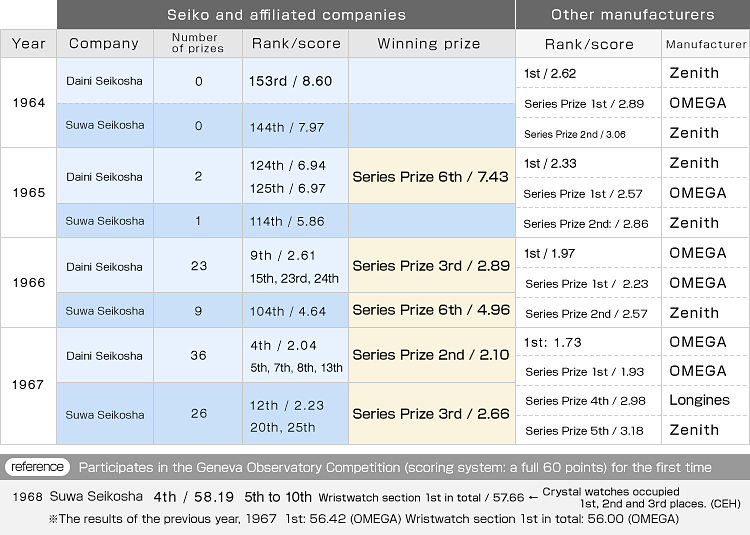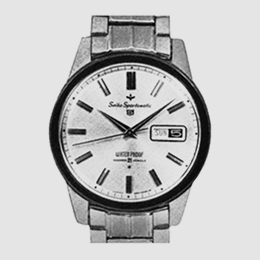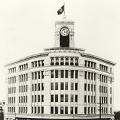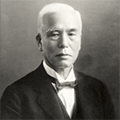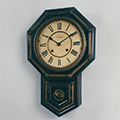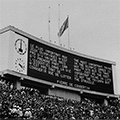Toward Developing Products Comparable to Timepieces from Switzerland
Quality Improvement and Exhibitions at Domestic and Overseas Competitions
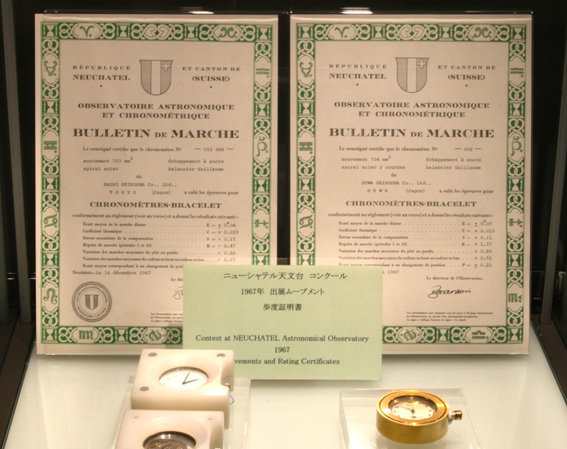
In the late 50s, Seiko renovated its timepiece manufacturing system and fully equipped its manufacturing lines with the aim of catching up with the timepiece industry in Switzerland. We embarked on our challenge to develop satisfying products capable of competing with Swiss-made products in the international market.
As a first step, Seiko joined the Timepiece Competition in Japan, an event officially called the “Quality Comparison Testing Board for the Assessment of International Timepieces” held by the Ministry of Commerce and Industry (currently the Ministry of Economy, Trade, and Industry).
The competition started in 1948, adopting standards applied at the observatory competitions in Switzerland with the aim of improving the quality of domestic timepieces. Our results lagged at the beginning, but steady improvements followed. With the release of the Marvel in 1956, we reached a dominant and unrivaled position within Japan.
Our next goal was to prevail in the globally authoritative Observatory Chronometer Competitions in Switzerland. Daini Seikosha (currently Seiko Instruments Inc.) and Suwa Seikosha(currently Seiko Epson Corporation) participated in the mechanical wristwatch section at the Neuchatel Observatory Competition in 1964. Within only three years, these companies enhanced their technologies to levels approaching the very top.
What Testing Standards are Applied at the Observatory Chronometer Competitions in Switzerland?
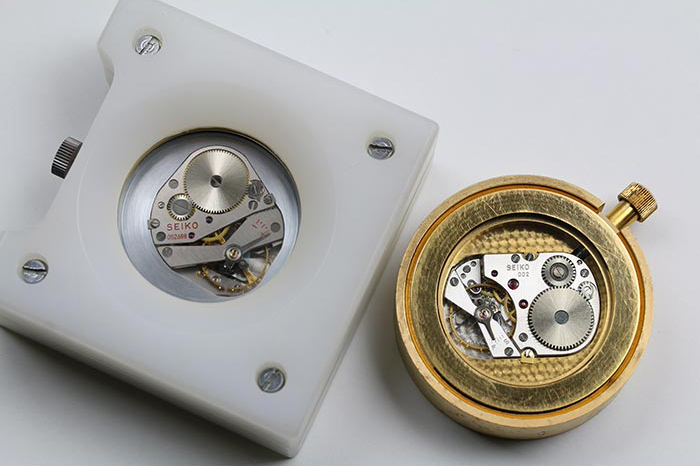
The Swiss timepiece industry held precision competitions at observatories in both Neuchatel and Geneva to improve the precision of Swiss-made timepieces. Both competitions were established at the behest of Swiss timepiece manufacturers and garnered long histories. Swiss law required third-party certification to market high-precision timepieces, which in turn required the establishment of a public institution. An astronomical institution able to publish scientific observations was chosen to take on the role. The events started as the chronometer tests and the role of competition was added to the events later. The British, meanwhile, have held an annual competition for navigation chronometers at the Royal Observatory Greenwich since 1822.
The plan to establish the observatory in Geneva first emerged in 1792. Not long after, the observatory was established. The competition began much later, in 1872. Neuchatel Observatory was established in 1858 to guard the benefits reaped by the timepiece industry in Neuchatel Province. The first chronometer tests there were carried out in 1860.
The chronometer test was first conducted with three types of timepieces: marine chronometer, deck chronometer and pocket chronometer. The event started to include competition soon afterwards. The popularity of the chronometer competitions surged in around 1941, when a watchmaker brought the first wristwatch to the chronometer tests. At the beginning, the testing at the observatory was only open to timepiece manufacturers in Neuchatel. Later testing was opened to other provinces, and finally to entrants from overseas in 1959.
Timepieces that passed the tests at the observatory competition were certified as chronometers. Those that scored more than the standards stipulated in the competition rules were awarded prizes. The criterion for the wrist chronometer at the Neuchatel Observatory Competition was 7.5 points (based on a point-deduction system). In 1967, 1,274 wristwatches were brought to the tests. 906 of them qualified as chronometers and 201 of them won prizes.
What are the Observatory Chronometer Competitions in Switzerland?
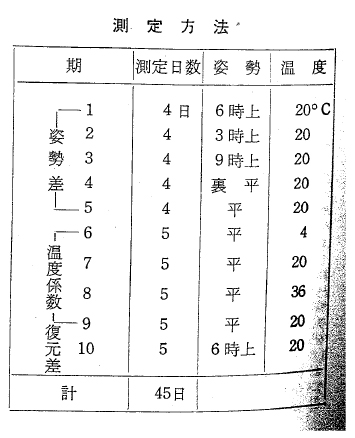
The key performance criterion at the tests was stability of precision. The Neuchatel Observatory ranked timepieces by the remaining number of points after deduction is made according to the errors. The Geneva Observatory, meanwhile, calculated 60 points as a full score.
The high testing standards were very difficult to meet with wristwatches manufactured for commercial sale. Instead, the timepiece manufacturers designed prototypes, adjusted them especially for the tests, and entrusted them to the observatory for the actual testing procedures. Timepieces that passed the tests were certified as observatory chronometers. These chronometers rarely made it to market, however, as they were only designed for precision. If timepieces were designed to meet practical requirements for commercial success, they lost too much precision to pass the testing standards. The timepiece that won the first prize at the competition incorporated the highest technologies available in the Swiss timepiece industry and required the highest points for precision.
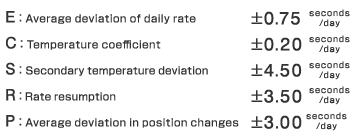

Results Achieved by Mechanical Wristwatches at the Neuchatel Observatory Competition
Results of mechanical wristwatches
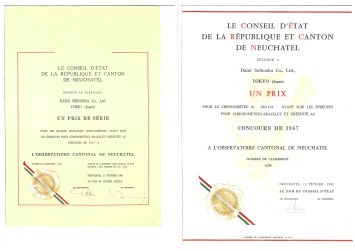
In 1964 when Seiko joined the competition for the first time, the best ranking entries from Suwa Seikosha and Daini Seikosha respectively finished in 144th (7.97 points) and 153th (8.47 points) place, too low to even pass the tests. In 1967, only three years later, they respectively won the 3rd and 2nd of Series Prize in the company prize category.
In 1968, Suwa Seikosha was in reach of a top position in the Geneva Observatory Competition. Ultimately it took the 4th place ranking (58.19 points) to 10th place, the highest ranking for a mechanical wristwatch, while Quartz watches made in Switzerland took the 1st to 3rd place positions in the wristwatch section. The 58.19 points awarded at Geneva (point-addition scoring system) surpassed all records from the past. If converted to the Neuchatel point-deduction scoring system, the score would have been 1.33 points, also an all-time record.
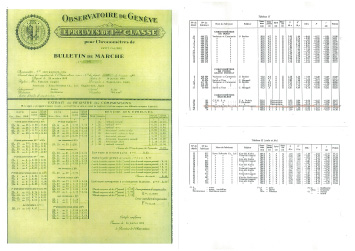
The judges at the observatory competitions in Switzerland asked timepiece manufacturers to reduce the precision error of mechanical timepieces –the total of various kinds of error such as temperature error, position difference, and isochronal error– to “as close to 0 as possible.” Seiko’s coordinators and engineers teamed up to drastically improve its results and come within reach of the top ranking in only four years. They achieved this breakthrough by introducing a high-frequency balance, studying and advancing their command over theory, and skillfully adjusting the balance spring.
The Neuchatel Observatory decided to discontinue its competition in 1976. Over its history of more than 100 years, this competition had made great contributions to precision in the timepiece industry all over the world. Much of the technology and skill in precision learned through the competition was applied to the Grand Seiko and King Seiko, the top watches from Seiko.
References
"History of Seiko Watches in the Postwar Period”
"THE SEIKO BOOK”
"International Timepiece Journal”
・Hanetachi, N. 1968. Results of Neuchatel Observatory Chronometer Competition in 1967. Vol.9 No.94
・The Desk. 1969. Chronometer Competitions at Observatories. Vol.10 No.106
・he Desk. 1969. Chronometer Competitions at Observatories (2nd version) Vol.10 No.107
“Rapport sur le Concours chronométrique” OBSERVATOIRE CANTONAL de Neuchatel from 1963 to 1968


